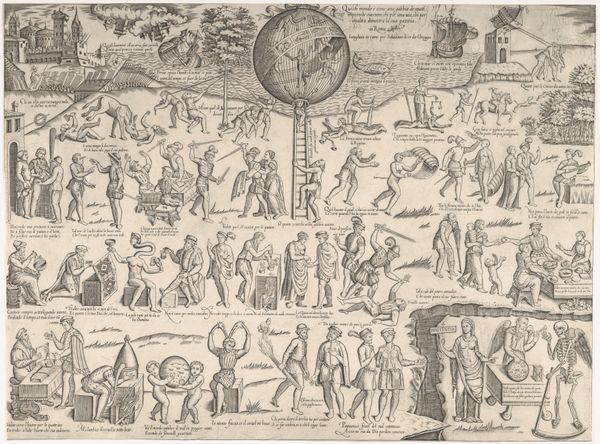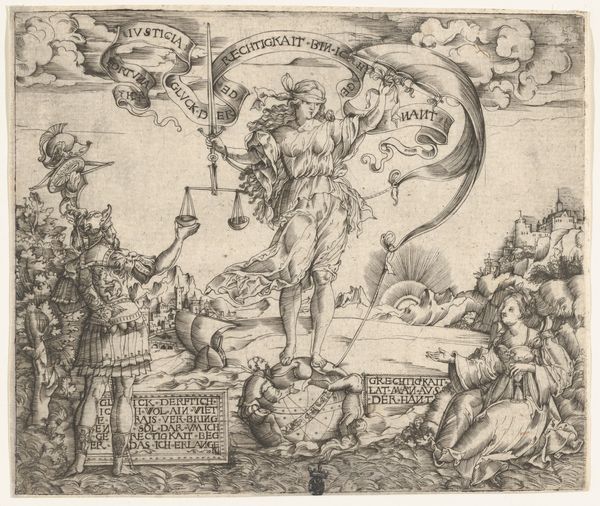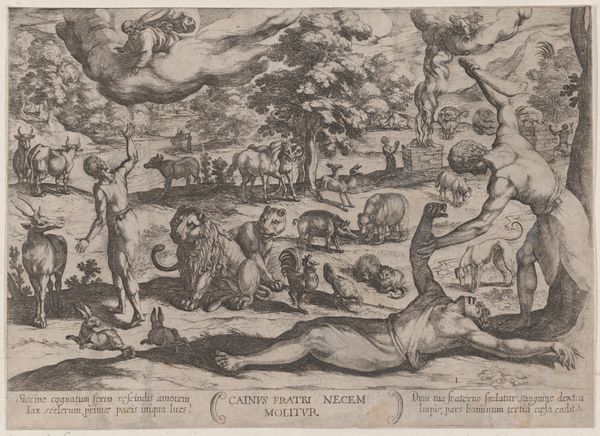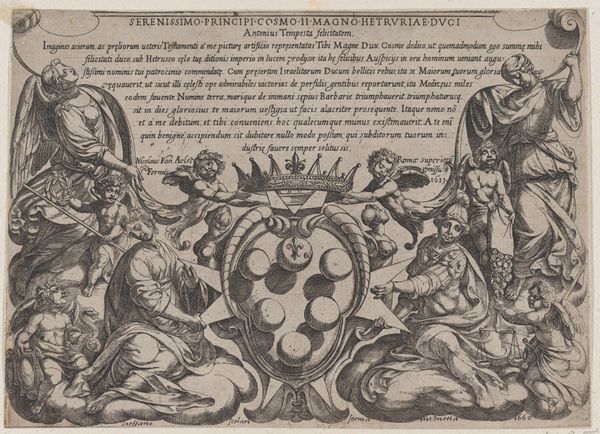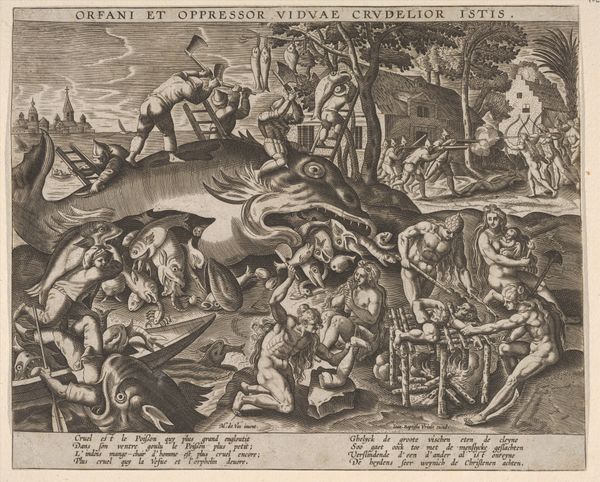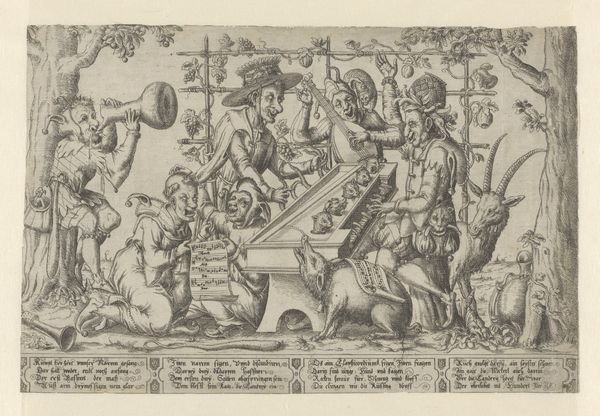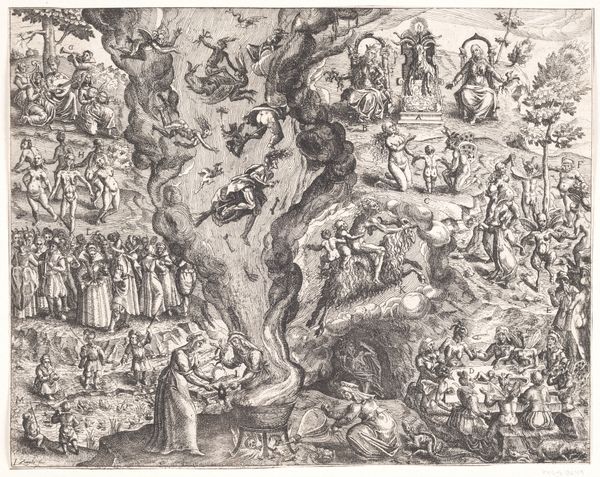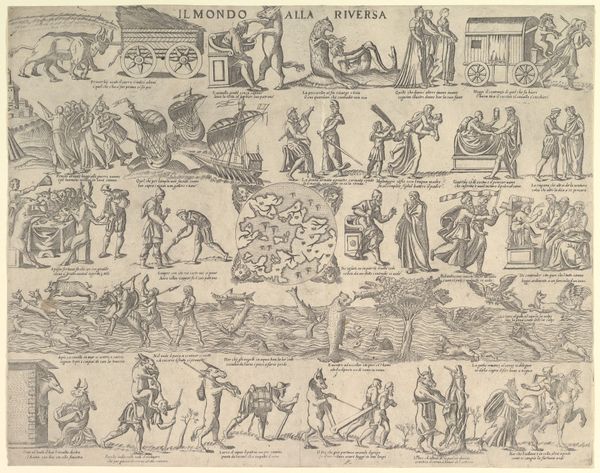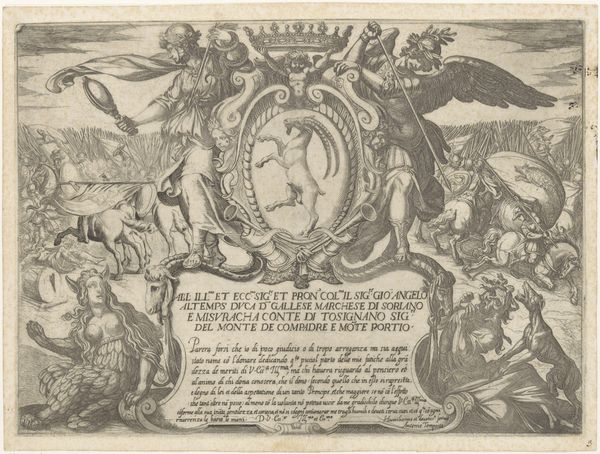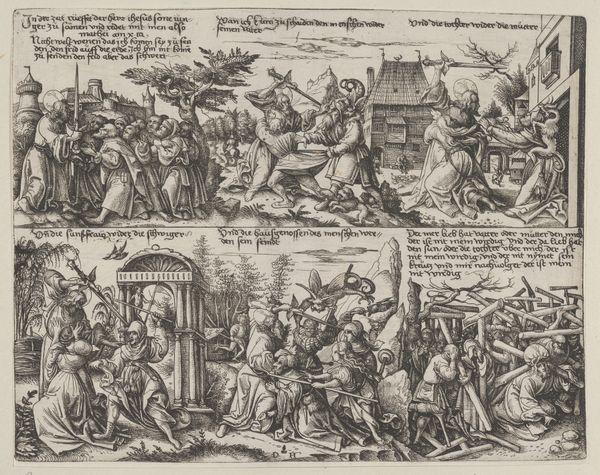
drawing, print, engraving
#
drawing
#
medieval
#
allegory
# print
#
mannerism
#
figuration
#
line
#
history-painting
#
engraving
#
christ
Dimensions: sheet: 9 3/8 x 13 1/2 in. (23.8 x 34.3 cm)
Copyright: Public Domain
Editor: "The Triumphant Christ," an engraving by Daniel Hopfer, likely created sometime between 1525 and 1541. It’s…dense, wouldn't you say? A whirlwind of figures and text. What draws your eye when you look at this work? Curator: As a historian, my gaze is pulled towards how this print participated in the Reformation debates of the 16th century. Notice how densely packed it is with imagery and text. The very act of printing these images made them accessible to a wider public, furthering these debates beyond elite circles. How do you think this imagery, readily disseminated, might have been interpreted politically and theologically? Editor: Well, you’ve got Christ standing over what looks like a serpent, but then there’s hell on one side, a crowd of people ascending on the other... Maybe a simplistic view of good versus evil, widely available. Is there something about how he chose to portray these elements that tells a further story? Curator: Precisely. The stylistic choices – the somewhat flattened perspective and swirling figures – relate to the Mannerist aesthetic, which often played with distortion to convey complex theological ideas. Think about who was commissioning art at this time. Were these types of prints primarily for Church officials and the elite? Or would prints like this be widely seen in towns and marketplaces? Editor: More the latter, I’d guess. It's got the feel of something aiming for a broader audience. So, this wasn't necessarily commissioned as official religious art. Curator: Right. Hopfer's print functions more as a form of religious commentary accessible to those outside the direct control of the Church. By examining the political and cultural moment of the Reformation, we can unpack this work beyond a simple symbolic depiction of the triumphant Christ. What would you say is the legacy of work like this in art history? Editor: That really broadens my sense of what "religious art" can be, beyond just commissions of established patronage systems. This looks much closer to social commentary! Curator: Exactly. Considering the historical moment encourages a wider lens when considering this period and the artist.
Comments
No comments
Be the first to comment and join the conversation on the ultimate creative platform.
